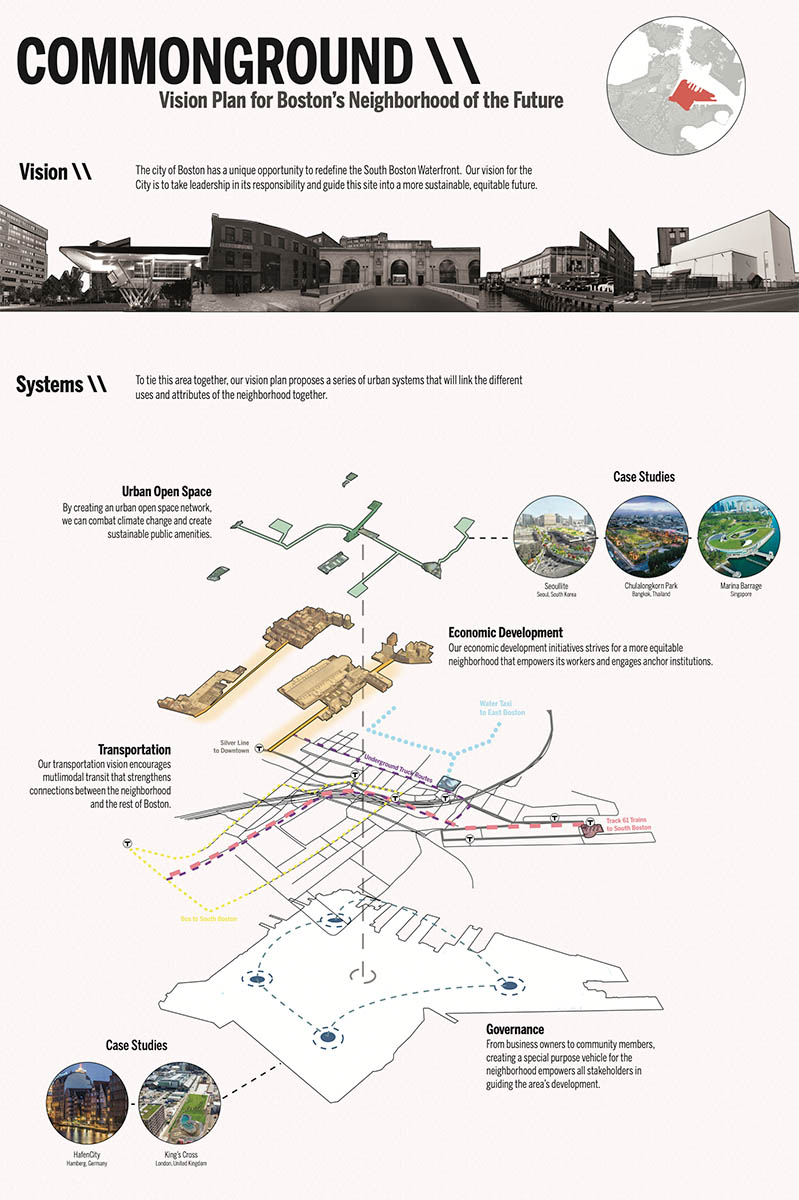Hometown
Philadelphia, PA
Undergraduate School and Major
Swarthmore College: Honors Urban Studies and Political Science
Program
Master in Urban Planning, 2021
Do I need to submit a portfolio?
For urban planning, submitting a portfolio is optional. I didn’t have one prepared for graduate applications and didn’t submit one. The general advice from our department is that if you have one, that’s great and if you don’t, no sweat!
What kind of issues are being addressed in the studios or other parts of the curriculum?
During our first-year core studios, we focused on learning how urban plans are conceptualized, how to utilize different research and field methods, and how to create planning interventions for neighborhoods in Boston and Lowell. Urban planning students have pushed the curriculum to focus on social and environmental justice, as well as examine power and equity issues in the discipline. For example, student projects included environmental design interventions for more climate-resilient cities, but also included community education and engagement strategies. Browse MUP degree requirements.
One of the GSD’s greatest strengths, and a reason I chose to attend, is the ability to create a truly interdisciplinary education path for yourself.
How does history/theory influence practice at the school?
In urban planning, we are constantly grappling with how previous stakeholders and planners created the conditions and institutions that shape our cities today. Through core studio and other GSD courses, we investigate these historical dynamics and produce solutions for a more equitable, sustainable future. The most rewarding aspect of my coursework has been working with professors who challenge us to be visionary while not losing sight of the implementation.
What opportunities are there to get involved with across Harvard and with faculty research?
I’ve been fortunate enough to engage in a variety of research projects both at the GSD and across campus. I am currently a research assistant for Professor Diane Davis. Over the summer, I have been conducting research on illicit spaces and processes in US planning practices. Outside of the GSD, I am a research assistant at the Bloomberg Harvard City Leadership Initiative (BHCLI), which is housed in the Ash Center for Democratic Governance and Innovation, and is a collaboration among Harvard Kenndy School, Harvard Business School, and Bloomberg Philanthropies. At BHCLI, I have researched cohort effects among Initiative mayors, analyzed COVID-19 responses from over 200 cities across the US, and am currently assisting in civic engagement framework development.
For fall 2020, I will be a Graduate Student Associate at Harvard Asia Center, where I was awarded 2019 winter funding for an independent study on creative neighborhoods in Bangkok, Thailand. This project is under the guidance of both GSD and Faculty of Arts and Sciences faculty. It has been incredibly rewarding to learn different research approaches to the urban environment.
How much freedom is there to take courses from other programs/departments? What about MIT or other Boston-area schools?
From my experience, there is a lot of freedom. In the fall, I took a course at the Harvard Kennedy School. During J-Term and the spring semester, I took courses at Harvard Law School and Harvard Business School. Next year, I’m looking forward to trying out courses at MIT and the Faculty of Arts and Sciences. One of the GSD’s greatest strengths, and a reason I chose to attend, is the ability to create a truly interdisciplinary education path for yourself.
What characterizes GSD students’ mentality?

When I engaged with students and alumni while applying, I got good vibes all around! This was a huge deciding factor for me when I was choosing between programs. For the MUP program, due to the small cohort sizes, we quickly formed a strong community. Over the course of the year, we supported each other during core studio, helped each other find internship and campus opportunities, and had social events around Thanksgiving and Christmas. Outside of the planning department, I made friends with architects and designers through the many student clubs and activities. For example, Asian Pacific Islander American (APIA) in Design—an organization I co-founded last year—hosted Beer & Dogs with Taiwan GSD and Japan GSD in early 2020. Setting up the event, meeting new people, and dancing with friends was one of the highlights of my first year at the GSD.
How have you grown since coming to the GSD?
I have grown more confident in my design abilities, both technically and intellectually, through studio and learning from other students. Over the year, I have also learned about new career paths, especially jobs related to infrastructure, digital spaces, and public service.
I have gotten better at integrating my past experiences with my current student life. After two years of working and living in Southeast Asia, I learned how to translate a lot of planning and design approaches from abroad to what we are learning in the US. Lastly, I’ve become a much better cook!
All photos at Harvard were captured prior to the campus’ closure due to COVID-19.



